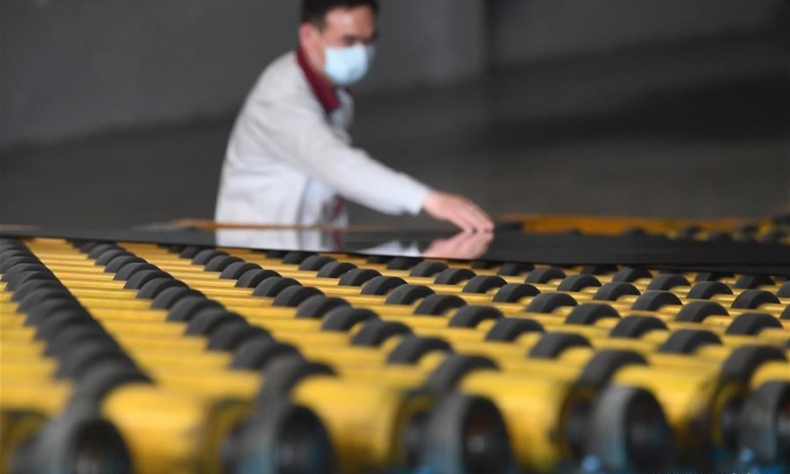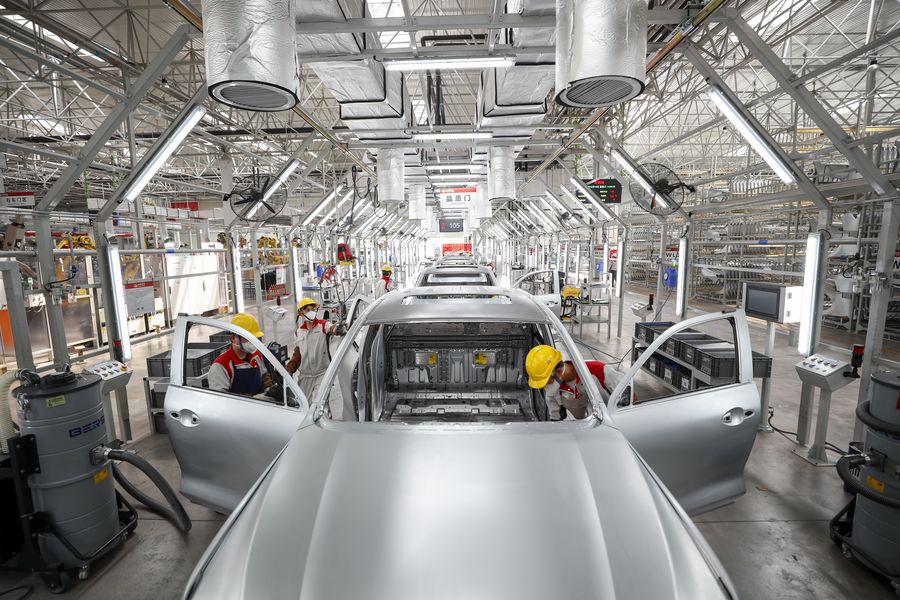The Recipe of China’s Massive Economic Rebound

With huge economy cost for more than two months, China finally restarts its wheel under strict precaution, how will the Chinese Government manage to get back on track?
It was just three months back when the city officials across China were standing at crossroads where they had to choose between the Chinese people’s health and their economic well-being. The cases related to the novel coronavirus, which was later dubbed as Covid-19 by World Health Organization (WHO), were spreading like wildfire first in Wuhan, then to the entire Hubei province and later on to the rest of the country.
After realizing the impending threat, authorities decided to pause most of the cities to a grinding halt to curb the number of infected patients. The highest-level emergency response was activated in the country while releasing an advisory for people to stay put and avoid gatherings. Besides this, almost all leisure and entertainment venues including, gyms, shopping malls, cinema theatres, restaurants, and salons were closed. However, as anticipated, it was just the beginning of the testing time for the country. In the days to come, China witnessed immense human suffering, deaths, and pain that has left a permanent mark on the minds and hearts of Chinese people.
Recovery after pause
Fortunately, the country has come a long way since then. The overall number of locally transmitted cases has come down to less than 100 nationwide. At the same time, the number of imported cases has also reduced dramatically because of the effective prevention and control measures of China, keeping the second wave of virus transmission at bay. Currently, the cumulative total of Covid-19 infected cases in China stands at 82,858, with 4,633 deaths.
Notably, there has been an equally drastic impact of COVID-19 on the Chinese economy. To contain this fallout, Chinese governments, at every level, have introduced a series of policy measures including cutting down interest rates, introducing preferential tax policies, providing finances, slashing rent and leases to boost up the businesses severely affected by the pandemic. Additionally, the government has also mobilized financial institutions to inject an enormous amount of liquidity to revitalize the financial markets. According to the Xinhua News Agency, apart from the government bailout of US$13 billion, an additional credit of more than US$200 billion has been extended by the financial institutions to the virus-hit enterprises.

Measures to help firms through this hardest time
Moreover, the Agricultural Bank of China has also taken several measures to reduce the burden of small and medium-sized enterprises (SMEs). The bank has offered payment extensions to those SMEs which are not able to repay their dues temporarily without any fines or surcharges, credit ratings downgrade, or negative impact on their future loan applications. Similarly, the State Council has also extended its support by waiving-off or cutting down social security payments in phases. Besides, it has allowed the companies to delay their share of contributions to the Housing Provident Fund. These policies would provide additional assistance to SMEs to weather the storm.
Furthermore, to stimulate the domestic consumption in the country, the local governments from around 50 cities from 16 provinces and regions have distributed digital vouchers worth hundreds of millions of yuan since March. Hangzhou city in East China’s Zhejiang province had distributed vouchers worth almost 1.68 billion yuan on March 26th. An additional 50-million-yuan worth of coupons was issued on April 1st in the city to stimulate the consumption level further. According to a statistic released by 21 Data News Lab, out of the total number of digital vouchers, 80 percent were for the catering related industry, and 42.5 percent were for the tourism industry. Apart from the above sectors, the distribution of consumption vouchers has also benefitted retail, housing, sports, and book publishing industries. It is worth noting that China’s retail sales of consumer goods dipped by 20.5 percent in the first two months of 2020. According to the National Bureau of Statistics, catering, automobile, and home appliances industries got worst hit with a fall of nearly 43.1 percent, 37 percent, and 30 percent, respectively. However, the recovery in March narrowed the fall in retail sales of consumer goods to 15.8 percent for the month and to 19.0 percent for Q1.

Preventing from within and without
Apart from introducing policy measures and incentivizing businesses to boost domestic consumption, authorities across China have also been taking stringent actions to keep the second wave of Covid-19 infections under control. For instance, officials have cut down the number of allowed travellers in all the country’s most famous tourist destinations to restrict crowding during the upcoming May Day or International Workers’ Day Holiday, from 1st to 5th of May. As per the plan, only about 30 percent of the usual maximum capacity of visitors will be allowed to enter these spots at any time. Also, the visitors must show their health status code using the smartphone app. Additionally, the thermal screening will be done at the entrance of each tourist spot.
Meanwhile, China has already cut down the number of international flights dramatically and suspended the visas allotted to foreigners in the wake of the increasing number of imported cases. As per Liu Haitao, Head of National Immigration Administration’s Border Inspection Department, the government body has recently enhanced the cooperation with neighbouring countries through information sharing, joint patrols, and inspections along with speedy deportation of illegal immigrants to stem the spread of the virus in the country.
Kenneth Kang, deputy director of Asia and Pacific Department at the International Monitory Fund (IMF) in an interview with Xinhua News Agency last month mentioned that with the gradual removal of containment measures and as a result of the effective policy measures, the domestic activity will slowly rebound and continue to recover in the second half of 2020. Notably, in its latest forecast, the IMF has projected that China’s economy is expected to grow by 1.2 percent in 2020 and nearly 9.2 percent in 2021.
Therefore, by looking at the adequate policy support provided by the country along with the effective virus control measures in place, it seems that China is on the right path to achieve the economic rebound and to bring the life of its people back on track. Further, the measures taken by the country in this direction could also provide valuable lessons for other economies.
The author is an active blogger, poet and freelance content writer. She is also the author of the book “To The Horizon We Indeed Sail”.
Copy Editor: Dong Lingyi
 Facebook
Facebook
 Twitter
Twitter
 Linkedin
Linkedin
 Google +
Google +










